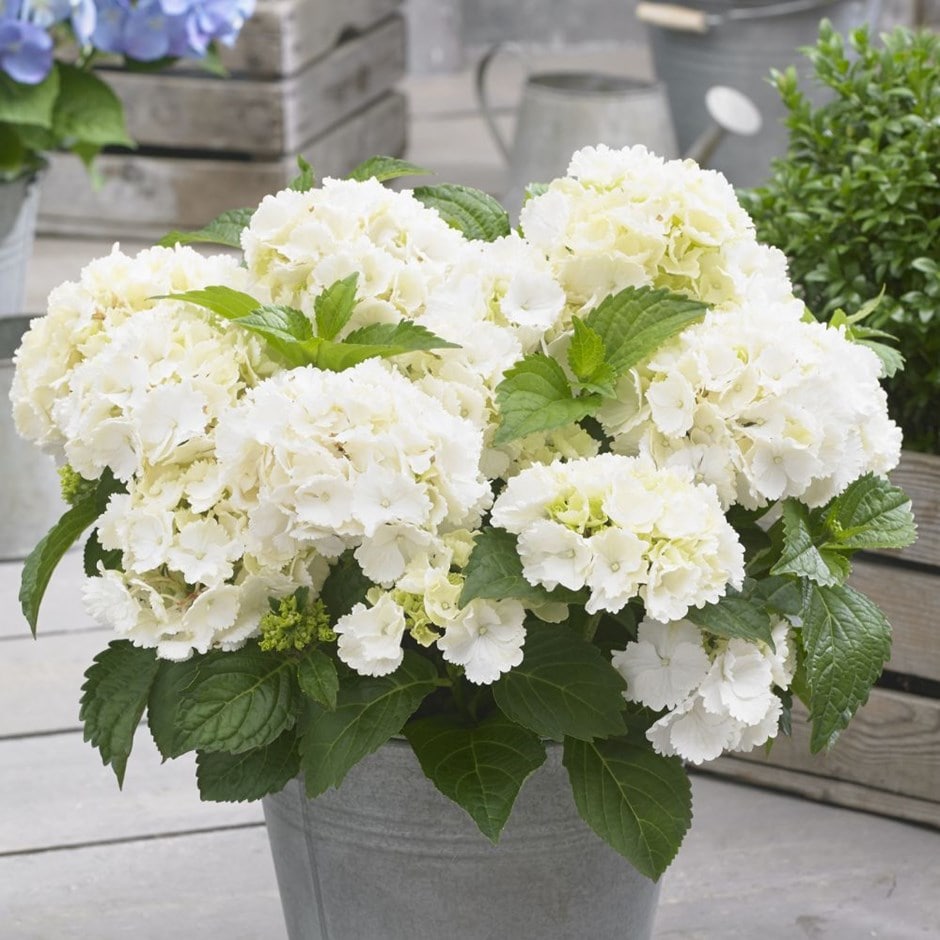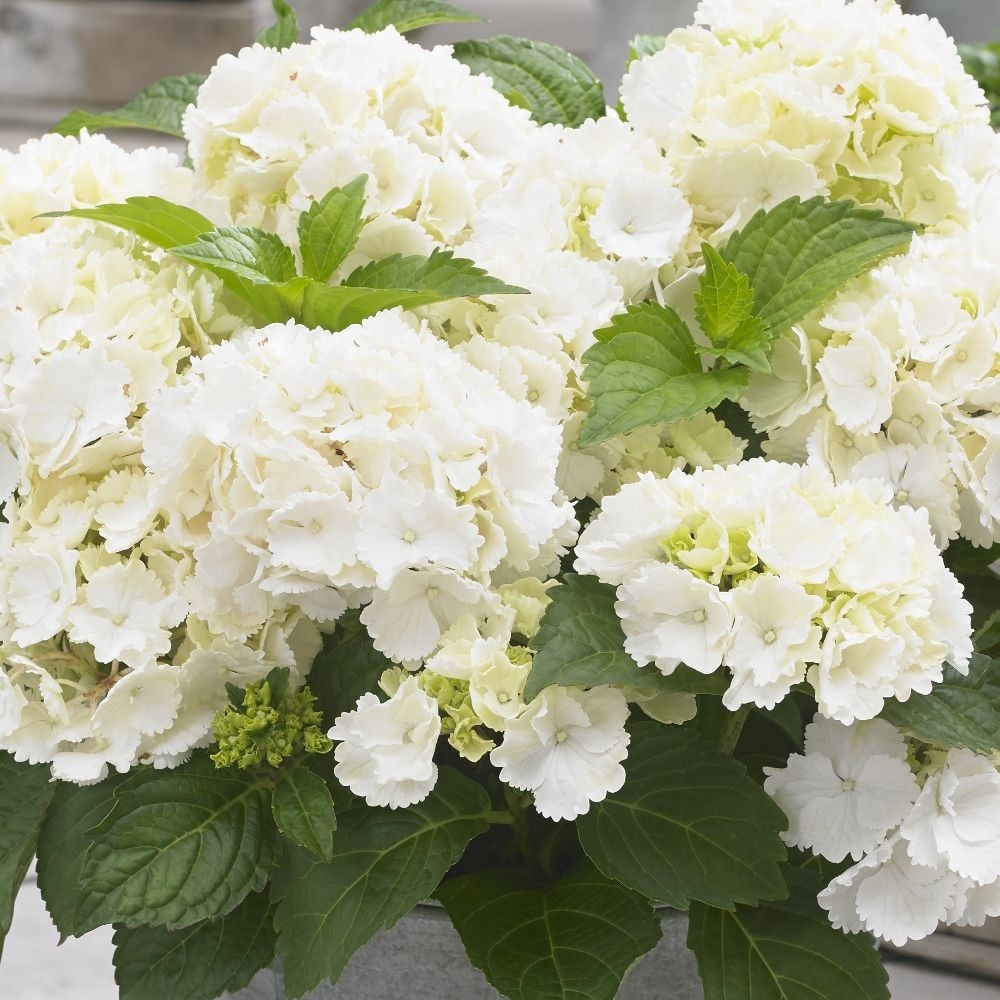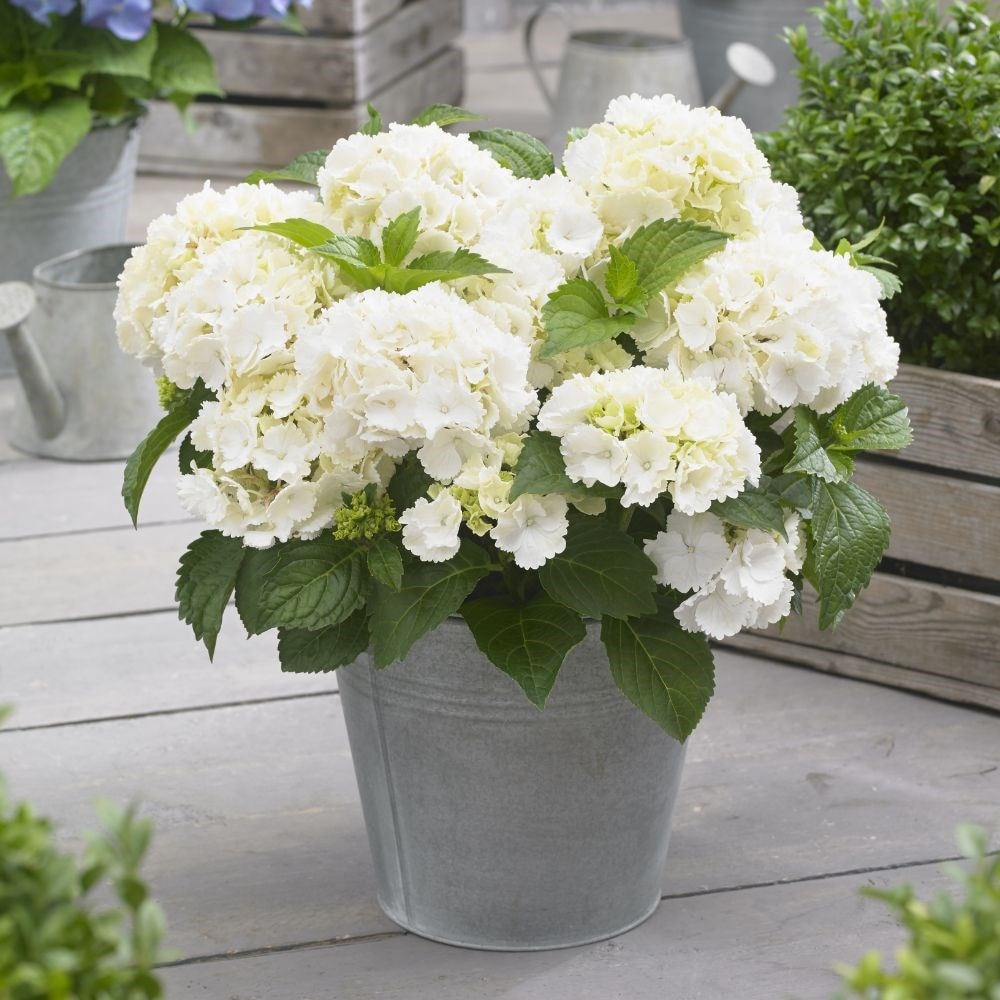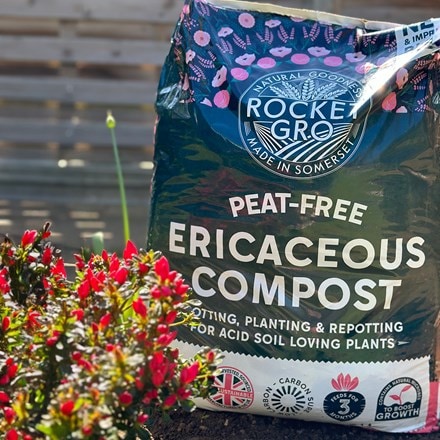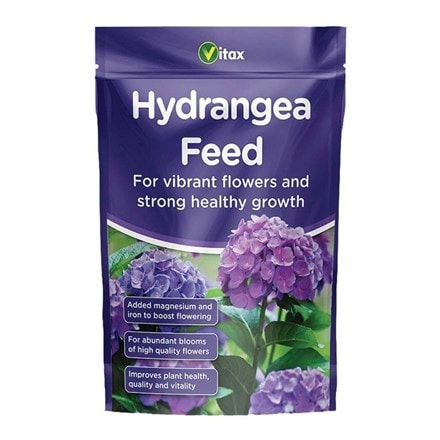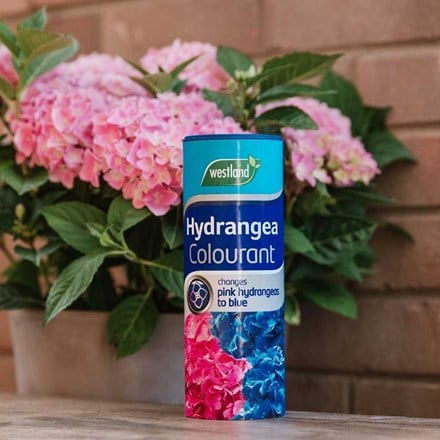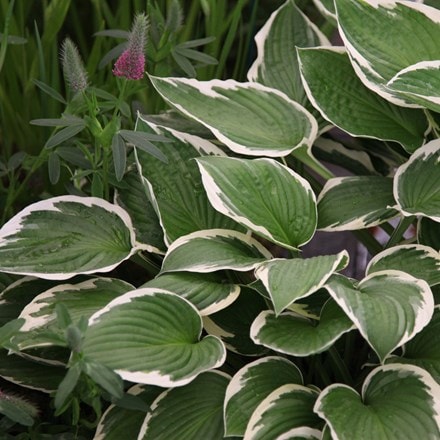Hydrangea macrophylla 'Little White'
mophead hydrangea
- 2 litre pot
- £15.29 £17.99
- In stock (shipped within 2-3 working days)
Delivery options
- Standard £5.99
- Position: full sun or partial shade
- Soil: moderately fertile, moist but well-drained soil
- Rate of growth: average
- Flowering period: July to August
- Hardiness: fully hardy
Compact and reliable, this dwarf hydrangea is perfect for smaller gardens, patio pots, and front-of-border planting.
Reaching just 60cm (24in) in height, it produces strong stems topped with dome-shaped clusters of pure white flowers that emerge with a hint of pale lime.
Blooming throughout summer, Hydrangea macrophylla 'Little White' provides long-lasting interest and can even be used for fresh or dried floral arrangements. The neatly serrated, deep green foliage forms a tidy backdrop, enhancing the bright flower heads.
Thriving in moist, well-drained soil, it performs best in partial shade but can tolerate sun with adequate watering. Low-maintenance, once established, and easy to grow, this compact cultivar brings the classic charm of hydrangeas to even the smallest spaces.
Please note that the pot in the photograph is not supplied with the plant (which is sent out in a simple nursery alternative), but we have a wide and wonderful range on our website to choose from.
Reaching just 60cm (24in) in height, it produces strong stems topped with dome-shaped clusters of pure white flowers that emerge with a hint of pale lime.
Blooming throughout summer, Hydrangea macrophylla 'Little White' provides long-lasting interest and can even be used for fresh or dried floral arrangements. The neatly serrated, deep green foliage forms a tidy backdrop, enhancing the bright flower heads.
Thriving in moist, well-drained soil, it performs best in partial shade but can tolerate sun with adequate watering. Low-maintenance, once established, and easy to grow, this compact cultivar brings the classic charm of hydrangeas to even the smallest spaces.
Please note that the pot in the photograph is not supplied with the plant (which is sent out in a simple nursery alternative), but we have a wide and wonderful range on our website to choose from.
Hydrangea thrives in moist, well-drained soil enriched with organic matter, making it important to improve the soil before planting by adding well-rotted compost or manure.
Choose a spot with partial shade, as full sun can scorch the leaves, especially in warmer climates, while deep shade may reduce flowering.
Regular watering is essential, particularly during dry spells, as these plants dislike drying out. To keep the soil cool and retain moisture, apply a layer of mulch around the base in spring, being careful not to let it touch the stems.
Pruning should be done with care. In early spring, remove any dead or damaged wood, but leave the old flowerheads on over winter to protect the buds below from frost.
For mophead and lacecap cultivars, only prune back to the first pair of strong buds beneath the old flowers, as these types bloom on old wood. If necessary, remove one or two older stems down to the base to encourage new growth, but avoid cutting back the entire plant.
Fertilise in spring with a balanced feed, and for cultivars with colour-dependent blooms, test the soil pH. Adding hydrangea colourant (iron and aluminium salts) can enhance blue flowers in acidic soil, while lime can encourage pinker tones in alkaline conditions. It is best to choose according to the predominant soil conditions for best results on colour.
Choose a spot with partial shade, as full sun can scorch the leaves, especially in warmer climates, while deep shade may reduce flowering.
Regular watering is essential, particularly during dry spells, as these plants dislike drying out. To keep the soil cool and retain moisture, apply a layer of mulch around the base in spring, being careful not to let it touch the stems.
Pruning should be done with care. In early spring, remove any dead or damaged wood, but leave the old flowerheads on over winter to protect the buds below from frost.
For mophead and lacecap cultivars, only prune back to the first pair of strong buds beneath the old flowers, as these types bloom on old wood. If necessary, remove one or two older stems down to the base to encourage new growth, but avoid cutting back the entire plant.
Fertilise in spring with a balanced feed, and for cultivars with colour-dependent blooms, test the soil pH. Adding hydrangea colourant (iron and aluminium salts) can enhance blue flowers in acidic soil, while lime can encourage pinker tones in alkaline conditions. It is best to choose according to the predominant soil conditions for best results on colour.
- Humans: Skin allergen; Pets: Harmful if eaten
